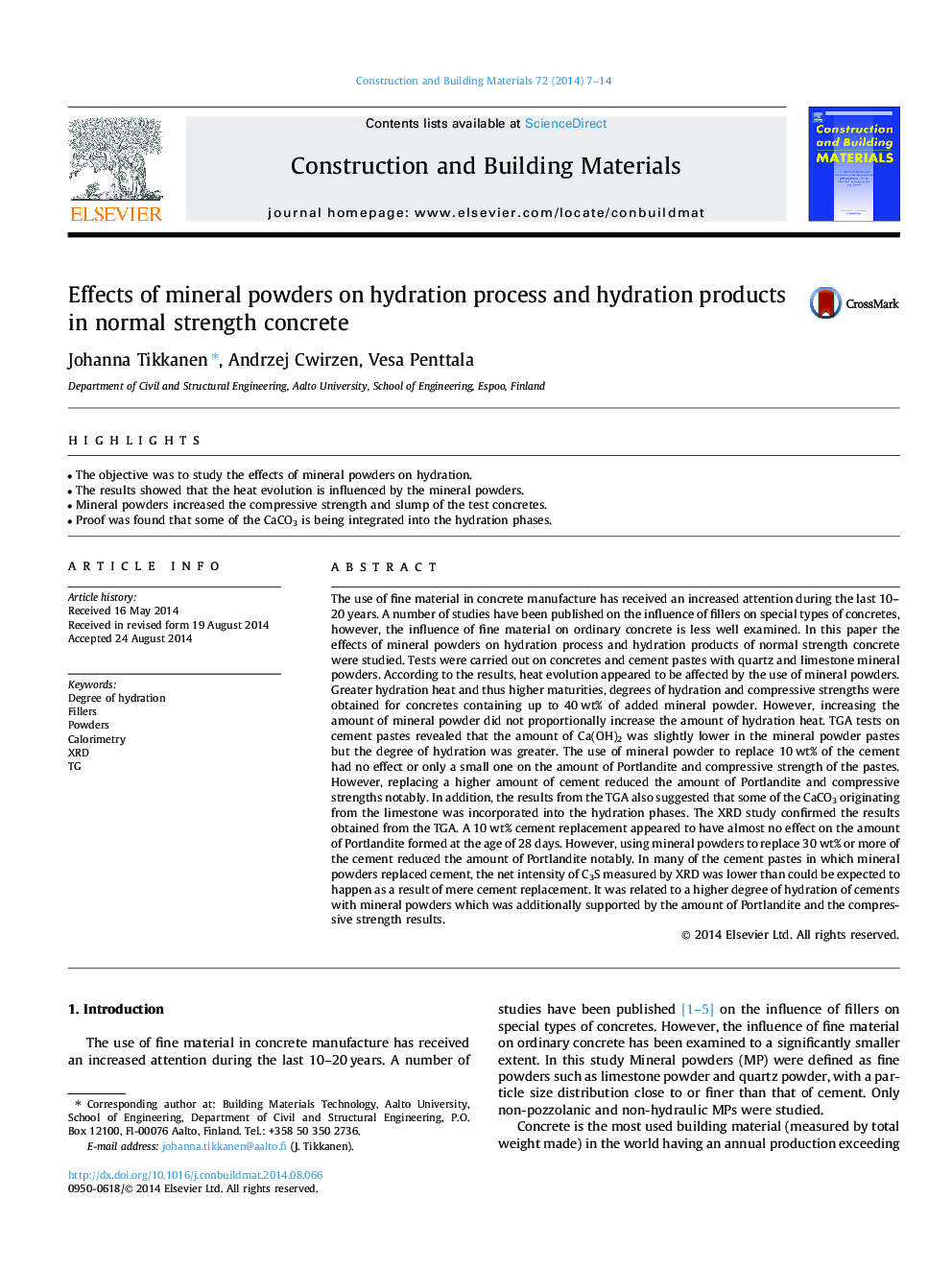| کد مقاله | کد نشریه | سال انتشار | مقاله انگلیسی | نسخه تمام متن |
|---|---|---|---|---|
| 6722008 | 503581 | 2014 | 8 صفحه PDF | دانلود رایگان |
عنوان انگلیسی مقاله ISI
Effects of mineral powders on hydration process and hydration products in normal strength concrete
ترجمه فارسی عنوان
اثر پودرهای معدنی بر فرایند هیدراتاسیون و محصولات هیدراتاسیون در بتن سبک نرمال
دانلود مقاله + سفارش ترجمه
دانلود مقاله ISI انگلیسی
رایگان برای ایرانیان
کلمات کلیدی
موضوعات مرتبط
مهندسی و علوم پایه
سایر رشته های مهندسی
مهندسی عمران و سازه
چکیده انگلیسی
The use of fine material in concrete manufacture has received an increased attention during the last 10-20Â years. A number of studies have been published on the influence of fillers on special types of concretes, however, the influence of fine material on ordinary concrete is less well examined. In this paper the effects of mineral powders on hydration process and hydration products of normal strength concrete were studied. Tests were carried out on concretes and cement pastes with quartz and limestone mineral powders. According to the results, heat evolution appeared to be affected by the use of mineral powders. Greater hydration heat and thus higher maturities, degrees of hydration and compressive strengths were obtained for concretes containing up to 40Â wt% of added mineral powder. However, increasing the amount of mineral powder did not proportionally increase the amount of hydration heat. TGA tests on cement pastes revealed that the amount of Ca(OH)2 was slightly lower in the mineral powder pastes but the degree of hydration was greater. The use of mineral powder to replace 10Â wt% of the cement had no effect or only a small one on the amount of Portlandite and compressive strength of the pastes. However, replacing a higher amount of cement reduced the amount of Portlandite and compressive strengths notably. In addition, the results from the TGA also suggested that some of the CaCO3 originating from the limestone was incorporated into the hydration phases. The XRD study confirmed the results obtained from the TGA. A 10Â wt% cement replacement appeared to have almost no effect on the amount of Portlandite formed at the age of 28Â days. However, using mineral powders to replace 30Â wt% or more of the cement reduced the amount of Portlandite notably. In many of the cement pastes in which mineral powders replaced cement, the net intensity of C3S measured by XRD was lower than could be expected to happen as a result of mere cement replacement. It was related to a higher degree of hydration of cements with mineral powders which was additionally supported by the amount of Portlandite and the compressive strength results.
ناشر
Database: Elsevier - ScienceDirect (ساینس دایرکت)
Journal: Construction and Building Materials - Volume 72, 15 December 2014, Pages 7-14
Journal: Construction and Building Materials - Volume 72, 15 December 2014, Pages 7-14
نویسندگان
Johanna Tikkanen, Andrzej Cwirzen, Vesa Penttala,
